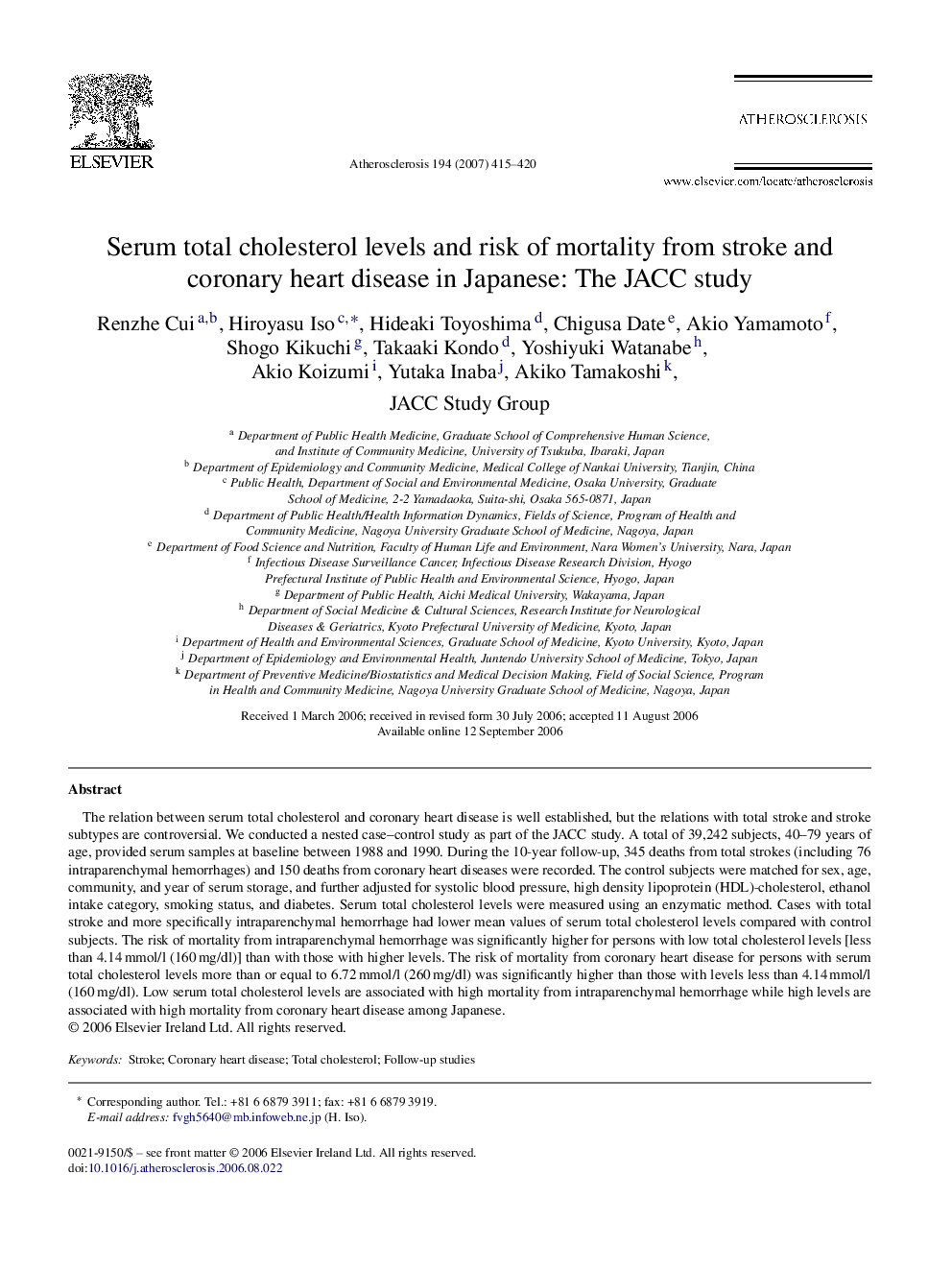| Article ID | Journal | Published Year | Pages | File Type |
|---|---|---|---|---|
| 2894439 | Atherosclerosis | 2007 | 6 Pages |
The relation between serum total cholesterol and coronary heart disease is well established, but the relations with total stroke and stroke subtypes are controversial. We conducted a nested case–control study as part of the JACC study. A total of 39,242 subjects, 40–79 years of age, provided serum samples at baseline between 1988 and 1990. During the 10-year follow-up, 345 deaths from total strokes (including 76 intraparenchymal hemorrhages) and 150 deaths from coronary heart diseases were recorded. The control subjects were matched for sex, age, community, and year of serum storage, and further adjusted for systolic blood pressure, high density lipoprotein (HDL)-cholesterol, ethanol intake category, smoking status, and diabetes. Serum total cholesterol levels were measured using an enzymatic method. Cases with total stroke and more specifically intraparenchymal hemorrhage had lower mean values of serum total cholesterol levels compared with control subjects. The risk of mortality from intraparenchymal hemorrhage was significantly higher for persons with low total cholesterol levels [less than 4.14 mmol/l (160 mg/dl)] than with those with higher levels. The risk of mortality from coronary heart disease for persons with serum total cholesterol levels more than or equal to 6.72 mmol/l (260 mg/dl) was significantly higher than those with levels less than 4.14 mmol/l (160 mg/dl). Low serum total cholesterol levels are associated with high mortality from intraparenchymal hemorrhage while high levels are associated with high mortality from coronary heart disease among Japanese.
